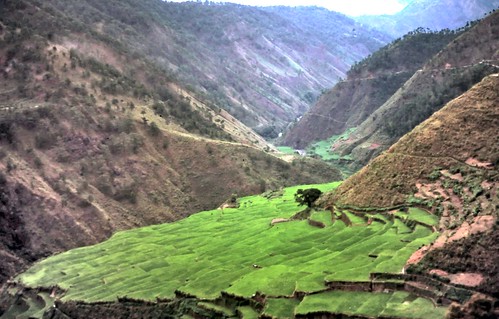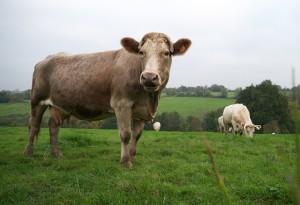Rice – staple crop and climate killer?
Our reporter Carl Gierstorfer is currently filming in the Philippines for his upcoming report on sustainable rice production: Here is his third dispatch from the field:
 "There are a lot of challenges ahead to adapt the world's most important crop – rice – to the consequences of climate change. Fortunately scientists got some smart ideas. But you might be surprised that rice farming itself has a negative impact on the world's climate. Not the plant is the problem, but the method in which it is grown. Rice (a sort of grass) needs a lot of water to grow. In fact, farmers flood their fields during the farming season, so that a fair part of the plant is submerged. This has many advantages; it keeps pests at bay, recycles nutrients and so on. But there is a downside. In these oxygen-depleted conditions bacteria grow that emit methane, a powerful greenhouse gas. In rice producing countries, the total emissions of methane make up a significant part of greenhouse gas emissions.
"There are a lot of challenges ahead to adapt the world's most important crop – rice – to the consequences of climate change. Fortunately scientists got some smart ideas. But you might be surprised that rice farming itself has a negative impact on the world's climate. Not the plant is the problem, but the method in which it is grown. Rice (a sort of grass) needs a lot of water to grow. In fact, farmers flood their fields during the farming season, so that a fair part of the plant is submerged. This has many advantages; it keeps pests at bay, recycles nutrients and so on. But there is a downside. In these oxygen-depleted conditions bacteria grow that emit methane, a powerful greenhouse gas. In rice producing countries, the total emissions of methane make up a significant part of greenhouse gas emissions.
Now here is the challenge: feed ever more people with rice, make farming more productive, but reduce emissions of greenhouse gases. Impossible? There is a way to get rid of the gas-emitting bacteria and even save precious water along the way. It is a simple method that scientists now try to bring to the farmers. How exactly this works, you will find out in my report.
We have traveled a fair deal now: from Manila south to the International Rice Research Institute (IRRI), then up north to the granary of the Philippines – the region of Nueva Ecija. We then headed to northern Luzon, to the Sierra Madre mountain range. Here are the famous rice terraces, carved into the hillsides by farmers some 2000 years ago. A UNESCO world heritage site – and topic of my next entry…"
(image thanks to CanadaGood @flickr)






